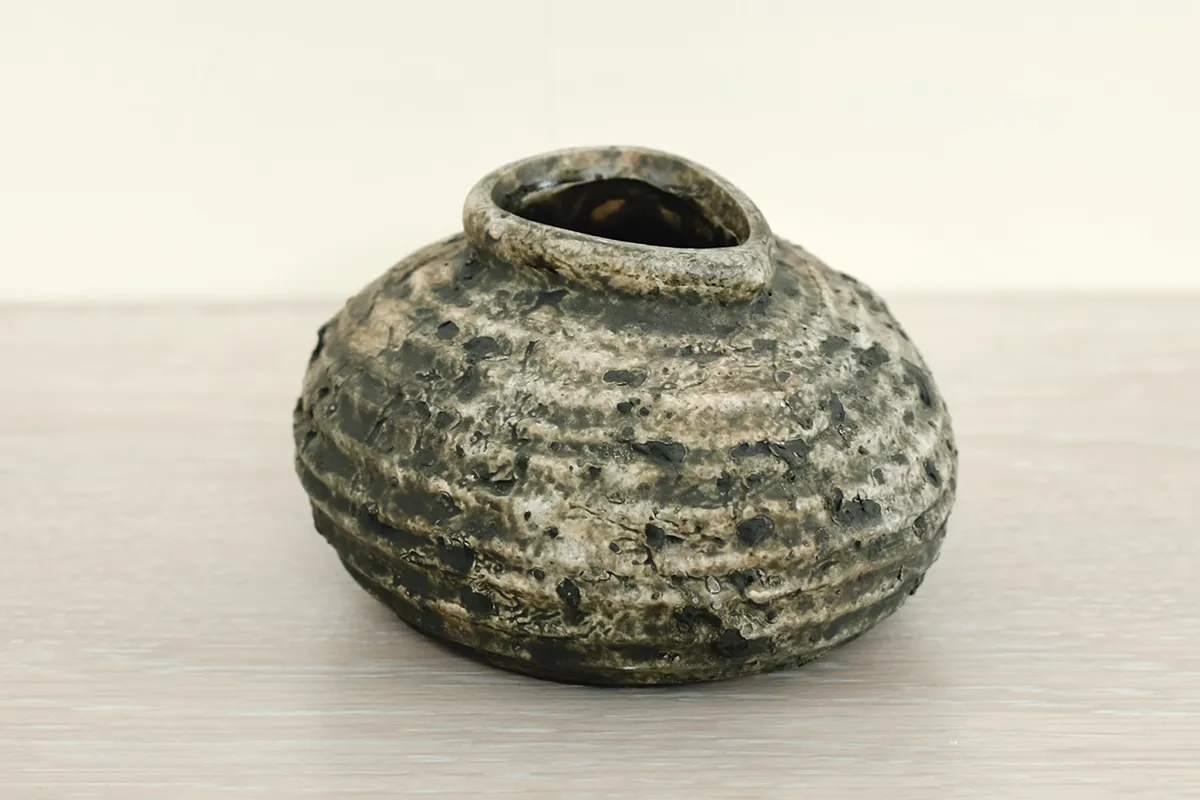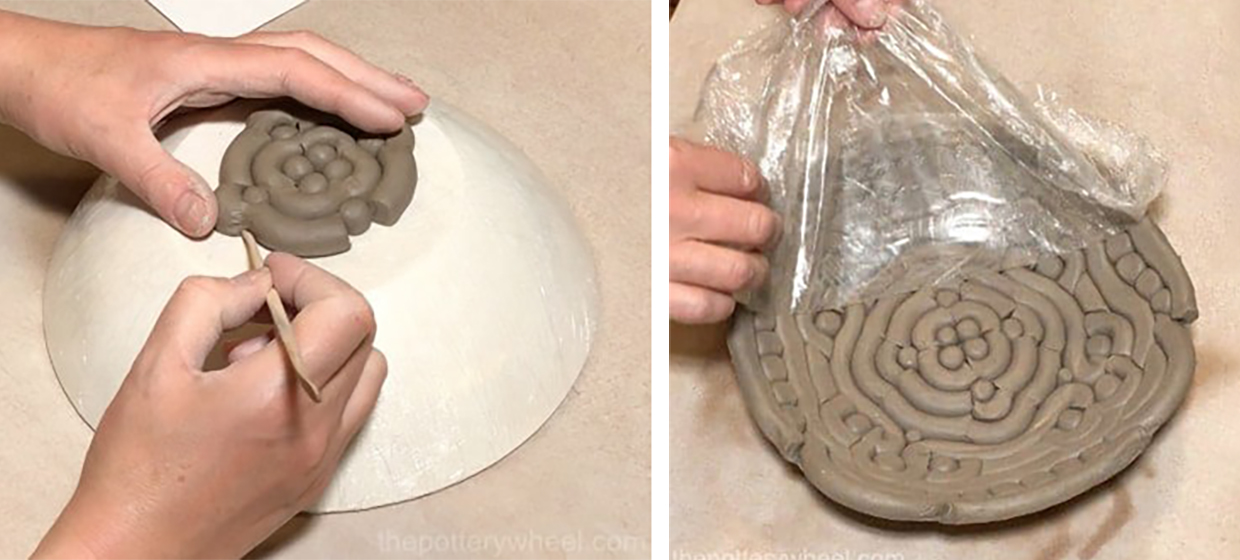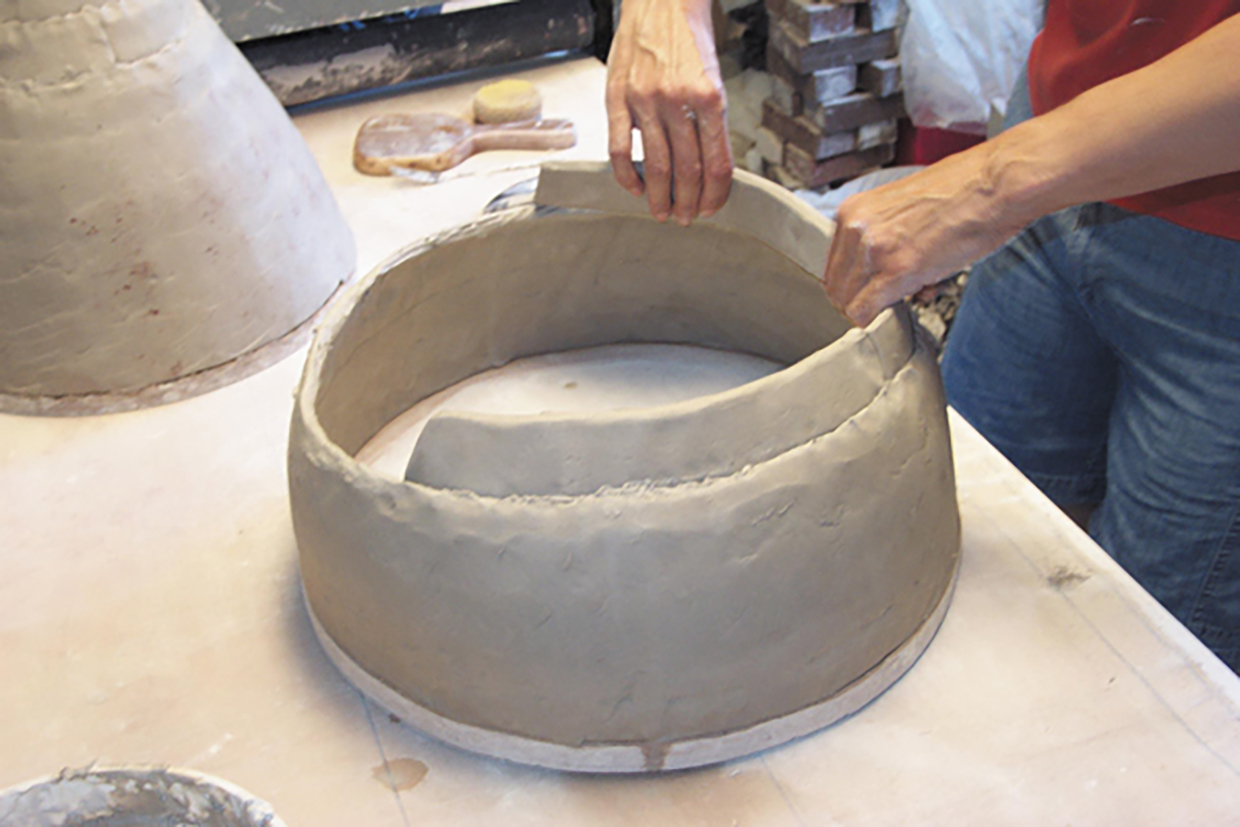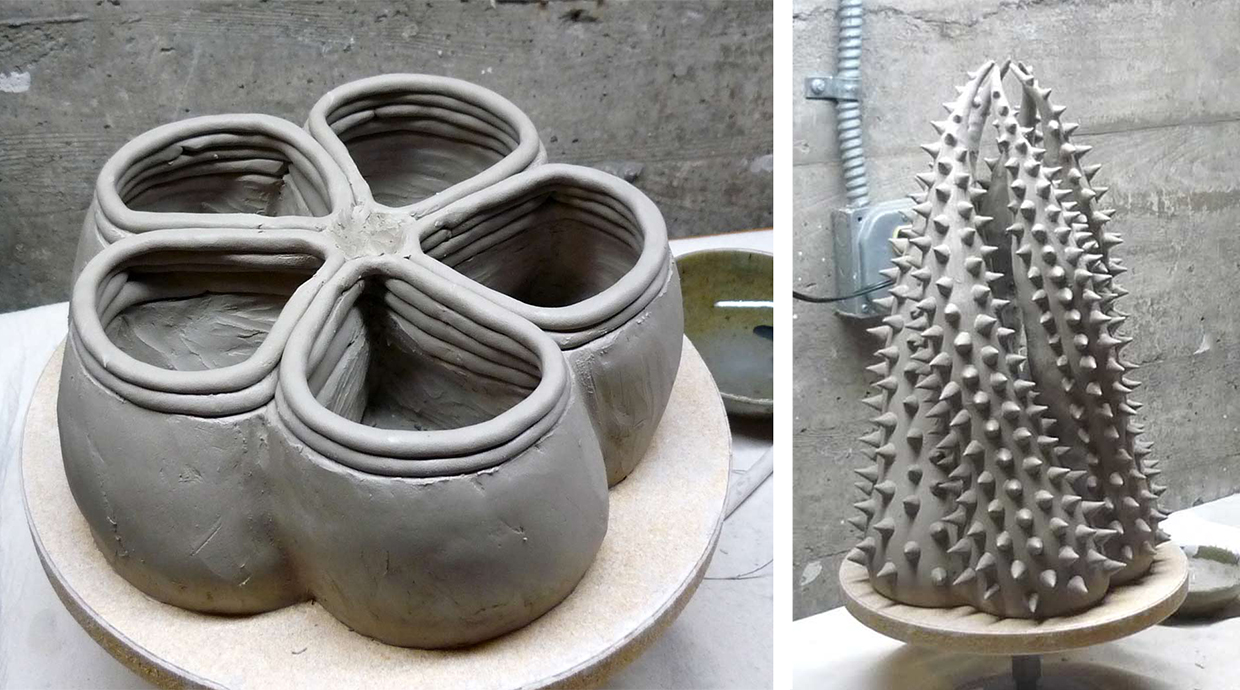How to make coil pottery
Step 1
Roll out the clay
Start by preparing a slab base. This is where you will need to make your first major decision – how big you want your pot to be! You want to roll out your slab to be roughly the same thickness as your coiled wall (or preferably a little bit thicker), so you’ll need a thicker slab for thicker walls and vice versa.
Once you’re happy with the thickness of your slab, use a round object like a plate to cut around with a knife to make a perfect circle (or alternative shape).
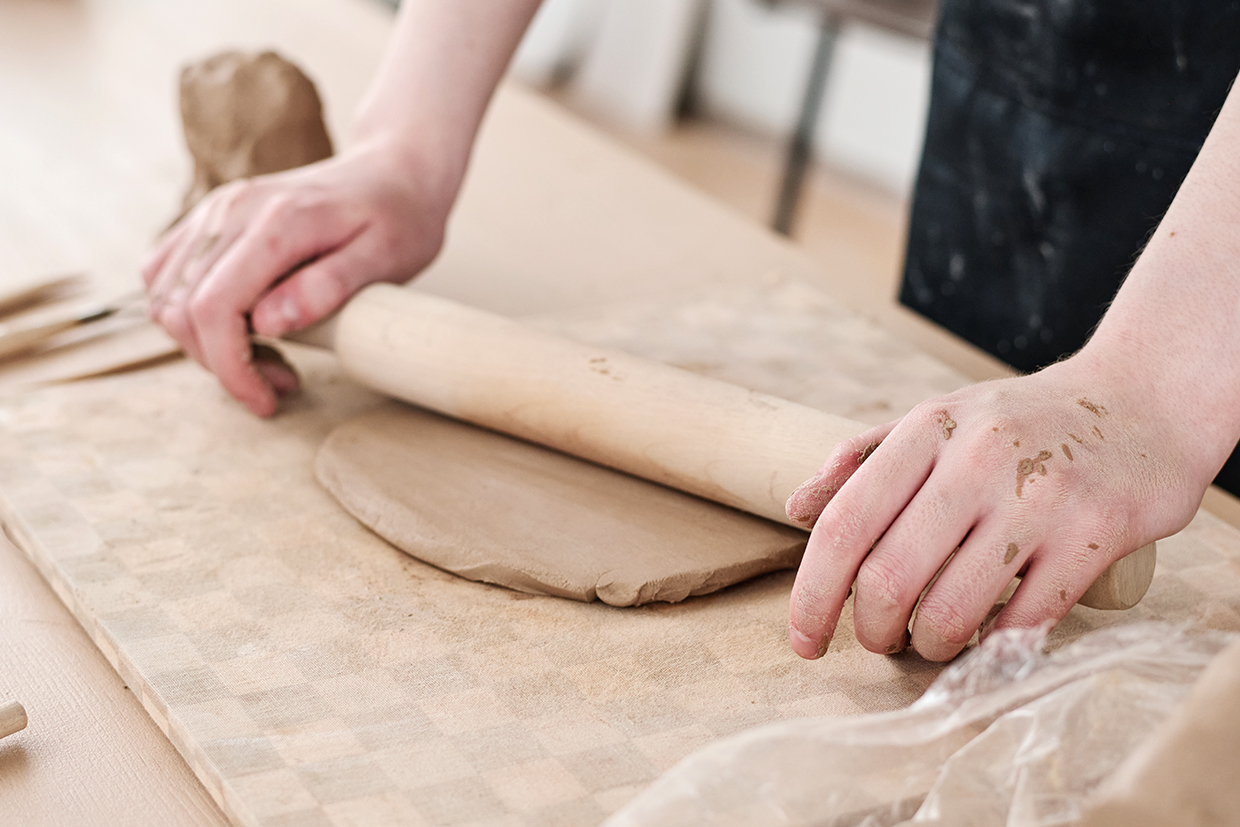
Step 2
Prepare your clay coils
Next you need to roll out your coils. It is important that your clay is the right consistency – you want it to be soft and pliable without being wet or sticky.
Start by moulding your clay into a cylindrical sausage shape, then roll the shape on a lightly damped surface with both hands to create an even coil. If you’re lucky enough to have access to a pottery studio, clay coils can also be made with a clay extruder (a device that squeezes clay through a die/hole to create an even and consistent coil) . We’ve included a handy video below with tips on making perfect clay coils.
Coils will dry out quickly so it’s best to cover with a plastic bag/cling film once made. It’s also wise to put your base on a wooden surface that you are able to move about, as you may need to make the pot in stages.
https://www.youtube.com/watch?v=x1gVp7knw2Y
Step 3
Scoring the base to secure the coil
Next you need to ‘slip and score’ your base. Essentially, you’re creating texture by scoring around the outer edge of your base, and adding clay slip onto this texture will help to glue your coil to it when you join the two together.
You can use a modelling tool to create your scoring, or any other tool that will create a scratched effect on the surface such as a metal fork. If you’re using a particularly damp clay or air dry clay, you can sometimes just use a bit of water instead of slip to create your join.
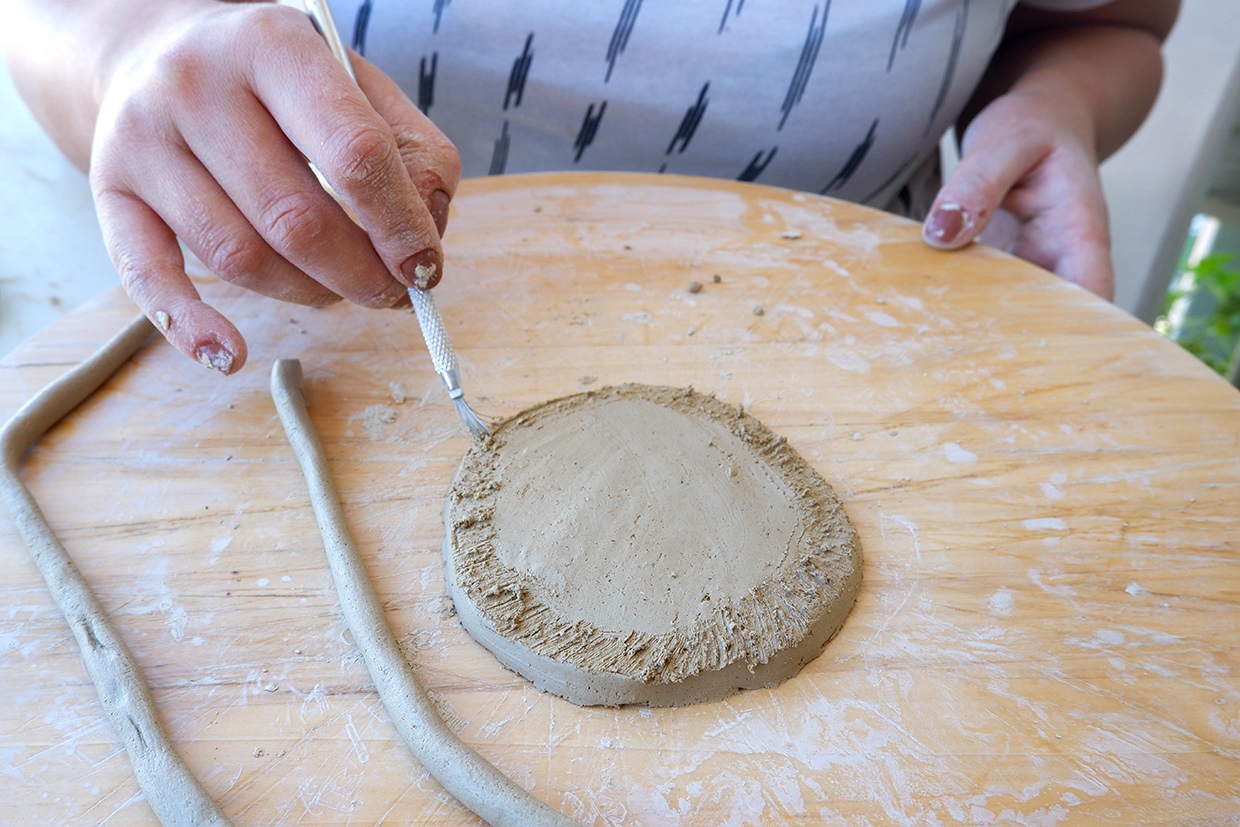
Step 4
Adding the first coil
Now arrange your first coil onto your base. You will want your coil to be long enough to go around the circumference of your base, so that you can cut off any excess and create a smooth join. If your coil is too short, it’s better to roll a more suitable one rather than trying to make it fit.
Arrange your coil and then overlay the excess on top or to the side, then remove enough excess so that your coil ends join while being lined up correctly on the base. Score the end of the coil and add a little slip to join the two ends together, then use your fingers to gently blend the clay together.
You want to press the coil onto your base so that it attaches to the slip and score, but not so much that you squash or flatten the coil.

Step 5
Blending the coils to the base
Next you need to blend the inside of your coil to your base. It’s important to do this with the first coil to ensure that the base and coils have a decent join and don’t separate when drying.
You can use a modelling tool or a finger/thumb to pinch down and blend the coil into the base slab, then smooth off with your fingers or a rib tool. With this first coil, we’d advise blending on the outside too just to give you that extra join to the base.
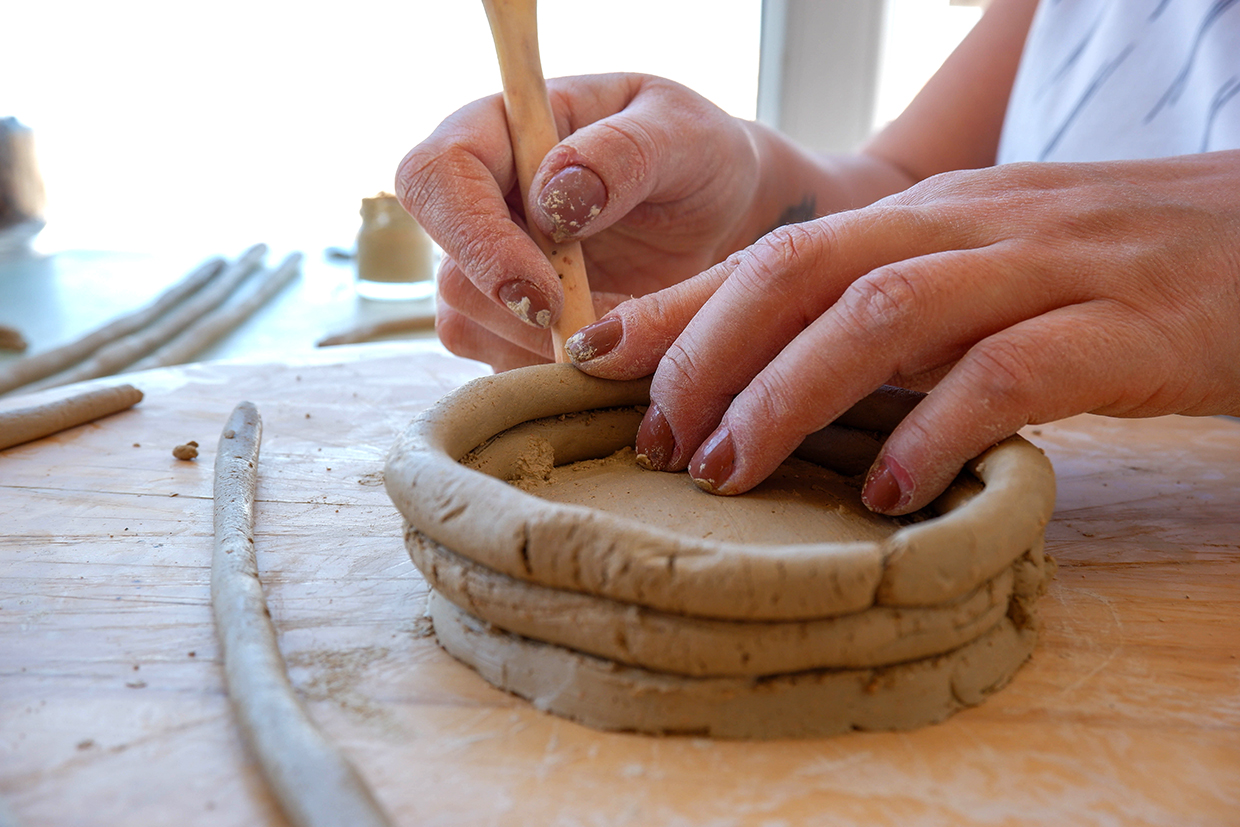
Step 6
Building up layers of coils
Now you just need to add more coils and build up the walls of your pot. Score and slip on top of the first coil and add the second coil on top. Remember to press down enough to get a good join, just don’t squash the coil or warp the shape of your pot.
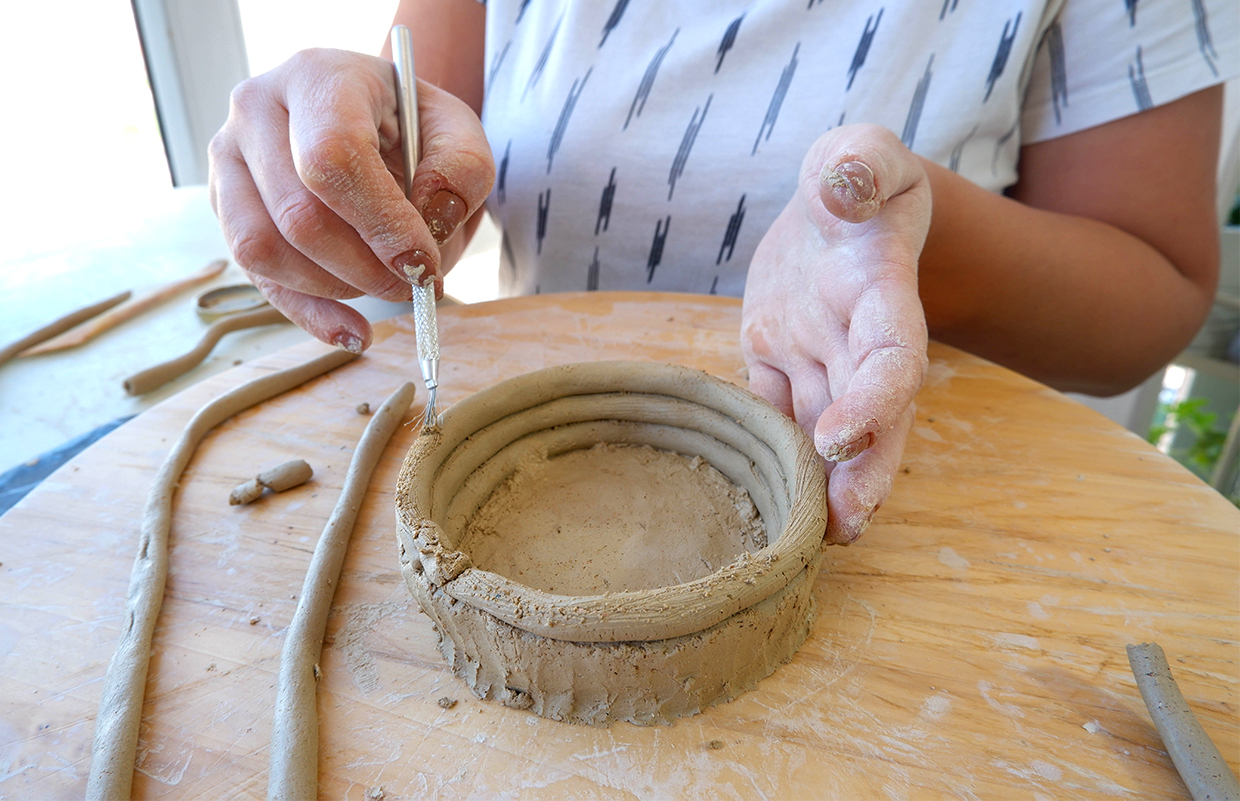
If you want to keep your coils visible as part of your design you don’t have to blend from this point on. However, you will need to make sure that you’re very thorough with your slip and scoring to ensure you have an adequate join. Even if you want your coils to be visible on the outside, it’s still worth blending the inside if you intend on using it as any kind of vessel as it will help to give it a better seal.
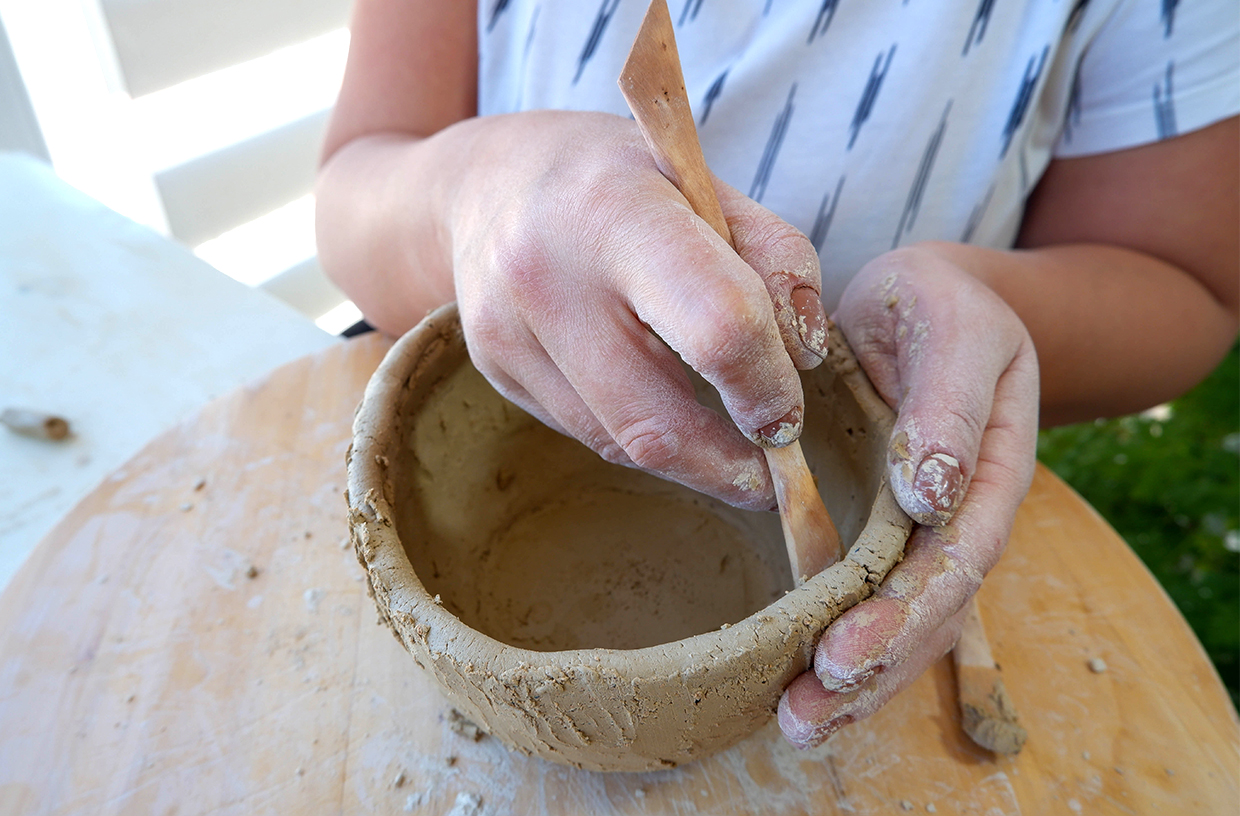
Step 7
Layering your coils gradually to prevent sagging
Continue the process of adding an extra coil one layer at a time. You should try to join your coil ends at different positions around your pot, as if you join them all in the same location you create more risk of cracking or the coils prising apart.
Once you’ve added a few layers, it’s worth taking a break and giving the clay a little time to dry before adding more. The more layers you add the more weight and stress your coils will be under, so more chance of sagging. This is particularly important for larger and taller pots, which could collapse under too much weight.
You can also shape your pot as you go by gradually using longer coils to make it wider, or shorter coils to bring your pot inwards.Try not to change your shape too suddenly or dramatically as your joins may not hold.
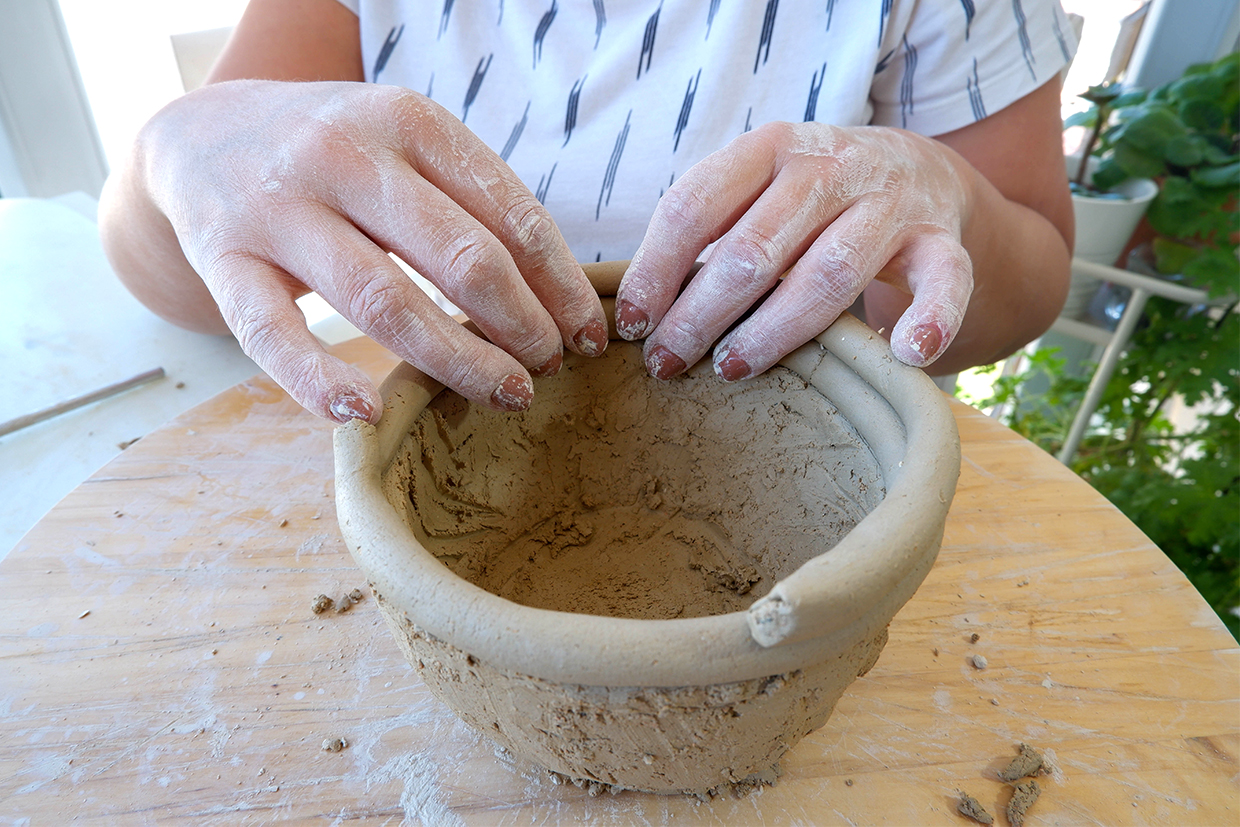
Step 8
Dry your pot ready for firing
Once your pot is complete, dry slowly before bisque firing.


